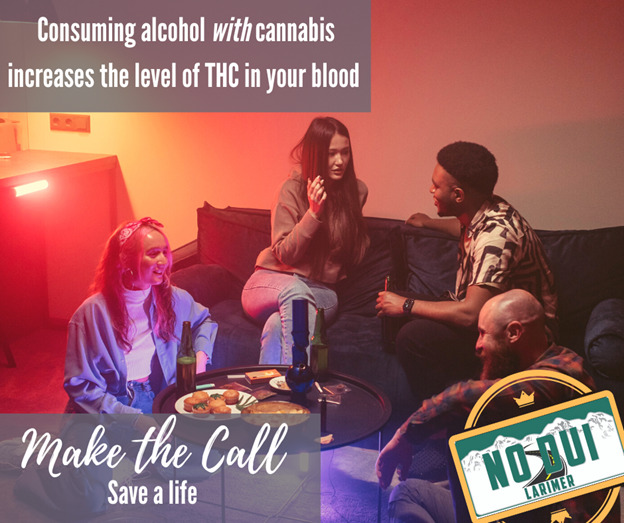Impaired driving is at a 40-year high in Colorado, and a large contributing factor is polyconsumption. As defined by the Centers for Disease Control, polyconsumption is “the use of more than one drug, also known as polysubstance use. This happens when two or more intoxicating substances are taken together, either intentionally or unintentionally.”

How is polyconsumption driving traffic fatalities in Colorado?
Polysubstance use is on the rise, and most commonly involves alcohol and cannabis. Using cannabis and alcohol together enhances the effects of each, and consuming cannabis with alcohol increases the amount of THC in your blood versus consuming the same amount of cannabis without alcohol.
The following effects of alcohol and cannabis are increased when they are combined:
- Slowed reaction time
- Loss of coordination and problem-solving skills
- Impaired decision-making ability
- Distorted perception and peripheral vision
While use of both alcohol and cannabis is legal in Colorado, driving after consuming either is not.
The Colorado Division of Criminal Justice published a report in January 2022 that analyzed 2019 data from more than 26,000 impaired driving cases filed in Colorado. Researchers followed the cases from arrest to final court outcome, and found the following (Colorado Department of Transportation):
- 45% of drivers tested positive for multiple substances. The most common combination of drugs detected was alcohol and Delta 9-THC, which is the primary psychoactive component of cannabis.
- The second most common pairing was alcohol combined with other drugs such as cocaine, methamphetamine, sedatives and opioids.
- 68% of individuals with detected Delta-9 THC also had some other substance present. Alcohol was the most common co-occurring substance.
The research even shows that users are more likely to drive (or take other risks) after using both substances than after consuming marijuana alone.
A study conducted at Swinburne University of Technology in Australia found that “consuming alcohol and marijuana at the same time, even in small doses, hampers driving skills more than consuming either one alone does.” Confirming previous research findings, both THC and alcohol independently impaired people’s driving ability. But, mixing alcohol and THC—whether in high or low doses—led to a dramatic increase in road errors.
A recent driving simulator study from the National Institute on Drug Abuse (NIDA) produced similar results: “Drinking alcohol and smoking marijuana had an additive effect, so that drivers using both substances weaved within lanes even if their blood THC and alcohol concentrations were below the impairment thresholds for each substance alone.”
Although only 1 in 10 drivers surveyed by IIHS (Insurance Institute for Highway Safety) reported using alcohol and marijuana simultaneously over the past year, among those simultaneous users, 33 percent reported drinking alcohol and consuming marijuana and then getting behind the wheel within two hours.

No DUI Larimer encourages all of our readers: Educate yourself about how alcohol and other substances affect you and how you can avoid driving impaired – take charge of your future. Make the Right Call.
Follow No DUI Larimer on Facebook, Instagram, and Pinterest for more ways you can combat impaired driving in our community.

![Partners [Logo Reversed]](https://poweredbypartners.org/wp-content/uploads/2020/06/partners-horiz-no-tag-sm-rgb-color-purple.png)